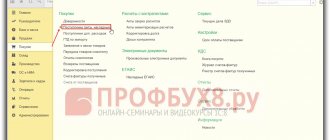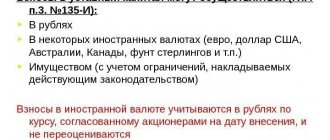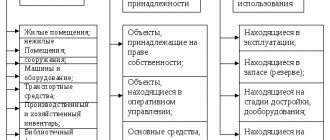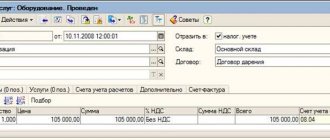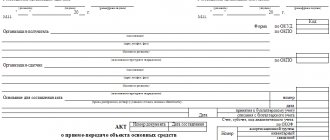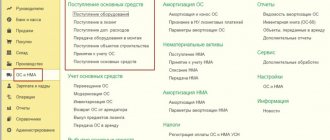Before issuing a water certificate for operation
If the equipment requires any tests and inspections, then before drawing up this act all such procedures must be carried out and completed.
As a rule, new equipment is checked for defects, defects, defects, malfunctions, as well as whether it complies with the regulations and standards adopted by the enterprise, labor protection and fire safety requirements.
All these procedures are carried out by a specially created commission, consisting of at least two people, which is appointed by a separate order by the head of the organization.
How to draw up an act correctly
As a rule, the act is drawn up between two parties: the transferor of the fixed asset and the recipient of it, incl. putting into operation.
Representatives of the parties in most cases are directors of companies, their deputies or heads of structural divisions.
However, if necessary, a third party can be involved in the form of experts (this is especially true in cases of transfer of complex technical equipment, instruments, machinery, and various types of structures).
The act refers to primary documentation, therefore, since 2013, the requirement to draw it up according to a strict unified template has been abolished. Today, enterprises and organizations have every right to compose it in any form or according to a template developed and approved within the company.
An important condition: in its structure and content, the act must comply with certain standards of office work, business documentation and the rules of the Russian language.
The document must include some mandatory information:
- a link to the agreement, to which the act is an annex, as well as the number, date, place of its creation;
- enter information about the enterprises that form the act;
- indicate the name of the fixed asset, the address at which it is installed or put into operation;
- describe the tests and inspections to which the fixed asset was subjected, as well as their results;
- the conclusions should record the suitability of the fixed asset for further use and the date from which it can begin to be used in work.
If there are any additional accompanying papers, they must be noted in the act as a separate item.
Basic rules for drawing up a water act for operation
This document does not have a unified, mandatory form, so it can be compiled either in free form or according to a template developed and approved within the enterprise. The act can be written on a regular A4 sheet, or on the organization’s letterhead.
It must necessarily include information about the enterprise where the equipment is being put into operation, as well as detailed information about its name, technical characteristics, conditions of use, etc. The more complex the equipment, the more detailed information about it needs to be recorded and the more points the act may contain.
This document must indicate the compliance of the introduced equipment with the internal requirements of the organization and legal standards, and also record the presence of comments or identified malfunctions. If the facts of defects are confirmed, then a special defect report must be drawn up for the equipment and the equipment cannot be put into operation until the defects are eliminated.
It should be remembered that after signing the act of putting the equipment into operation, the manufacturer’s warranty begins to apply to it.
The procedure for signing the equipment commissioning certificate
After checking the equipment and its readiness for commissioning, the act is signed by the members of the commission. The signatures of the supplier and buyer allow us to consider the act valid and the equipment ready for use. The act is signed in several copies, which each party must have. Certification of the deed by a notary is not required. Any of the representatives of the parties can sign the act, but only if they have a power of attorney.
Important . From the moment the document is signed, the warranty period for servicing the equipment begins to count.
Instructions for writing a water act for operation
- In the first part of the document, its name is written, and its essence is also briefly indicated (in this case, “about the commissioning of equipment”). The line below indicates the locality in which the act is created and the date: day, month (in words), year. Then the composition of the commission that checked the equipment is entered: the positions of the employees are entered, as well as their last names, first names, and patronymics. Here you should also make a reference to the order of the director who appointed the commission (indicate the full name of the enterprise, surname, first name, patronymic, manager, number and date of the order).
- The main part is to certify the fact that the equipment has been examined and inspected by the commission. Here you need to enter its name, serial number, technical characteristics, name of the manufacturer, place of manufacture of the equipment, etc. options. The regulations, laws, documents on the basis of which the inspection was carried out and its timing are also recorded here.
- The third part of the document contains information about the condition and quality of the equipment being put into operation.
If it is in good condition, then this should be noted; if it has any defects or malfunctions, then this should also be indicated. If there are any comments, they must be included in the act with all the details. Next, you should add a clause about the commissioning work carried out, as well as that the equipment meets all safety requirements (fire, technical, environmental, industrial). In conclusion, in this part, a separate paragraph needs to summarize that the equipment has passed the test and is ready for use.
The penultimate part of the document contains conclusions on the entire above procedure. If there are no complaints about the equipment, then here you need to enter that the equipment will be put into operation on such and such a date at such and such an address (the address of the enterprises where it will be used is indicated).
If there are complaints, then you should write “not ready for use until identified defects are eliminated.” Next you need to add a warranty clause.
After entering all the information into the act, links to all annexes to it with numbers and dates are included.
The act must be certified by the signatures of the inspection commission. The document can also be certified by a seal, but not necessarily, since since 2016, the presence of a seal for legal entities is not a legal requirement, but is voluntary.
Equipment commissioning certificate: features
When drawing up the act, it is necessary to pay special attention to filling out the items that occur in this type of document:
- the composition of the commission that checked the readiness of the equipment, indicating the assignment order;
- the period of performance testing and the criteria and methods presented for them;
- conclusions of the commission based on the test results.
The presence of these items is a guarantee confirming the functionality of the product. In this case, there is absolutely no need to indicate the passport details of the commission; it is enough to just enter the positions they occupy.
Important. When checking the commissioning of electrical equipment, in addition to representatives of the supplier and buyers, independent experts may be involved .
Operations required to place an order
To use the equipment in the future, it is necessary to officially confirm the commissioning. The procedure can be performed by issuing an appropriate local order and an act of acceptance and transfer of property, which will be the legal basis for registering the asset.
Before signing such an order, it is necessary to create a special commission that can determine the readiness of the OS to begin operation. The composition of the commission is at least 3 persons who are directly related to this type of equipment and must, as experienced specialists, evaluate:
- quality and general condition of the OS (they must correspond to the passport data of the object)
- as a result of a visual inspection, identify possible problems and malfunctions (or record their absence)
- It is imperative to start up the equipment, working out the time specified in the contractual obligations
- analyze the conditions where the OS will be used
In some cases, the execution of the above documents allows you to bypass the signing of the commissioning act.
When installing equipment to replace worn-out and obsolete equipment, it is accepted by a commission appointed by the enterprise and consisting of plant specialists.
When introducing new technologies, when mastering new products, when increasing production volumes, equipment is put into operation as part of construction and reconstruction projects in accordance with the procedure for accepting completed construction projects approved by standards.
Additional documents required for writing this document
Drawing up an act of commissioning equipment requires the availability of a number of permits relating to the operation of the commissioned facility.
We suggest you read: What documents are needed for a child’s birth?
For this you will need:
- Conclusion of the commission on the proper operation of the equipment;
- Technical act (its registration is necessary if accidents or work-related injuries occur at the enterprise);
- Certificate upon delivery to the organization;
- An act of repair or reconstruction of equipment.
Information for the document
In practice, very often the subject of civil transactions is various equipment. Equipment is rented, purchased, donated, etc. An integral part of such contracts is the act of putting equipment into operation. The legislation does not contain rules that regulate the process of drawing up an act of commissioning equipment. But the Civil Code of the Russian Federation contains some rules that regulate the procedure for accepting goods or services (for example, Articles 513, 720 of the Civil Code of the Russian Federation). These standards also apply to the act of putting equipment into operation. How and when to draw up this document and what features it has.
When the act is drawn up
In accordance with current legislation, drawing up an equipment commissioning certificate is not mandatory. But in practice, this document is always drawn up. This is primarily done in order to avoid further problems associated with equipment defects.
Important : if equipment is sold or transferred to a third party on the basis of other civil transactions, then it is necessary to draw up an act of putting the equipment into operation. Also, this document must be drawn up in cases where the operation of the equipment was stopped for the purpose of repair and resumed some time later: a commissioning certificate is drawn up when the equipment is resumed.
Drawing up such a document is an additional guarantee for both parties. This document is drawn up after the transfer of equipment and after its installation. In some cases, the act is also drawn up directly at the time of concluding the contract.
Parties to the act
Many people are interested in the question of who should sign the equipment commissioning certificate. Since this document is an integral part of the relevant agreement, it must be signed by the parties to the transaction or their authorized persons.
Important : very often a special commission is created to check the operation of the equipment. In these cases, the act of commissioning the equipment must be signed by all members of the commission.
Moreover, if the opinion of one of the commission members differs from the opinion of others, a corresponding entry is made about this in the document.
What needs to be included in the act
The legislation does not provide for a mandatory form of commissioning act. Accordingly, the parties may provide any information they consider necessary. The content of the act largely depends on the specifics and features of the equipment that is transferred on the basis of the transaction. Of course, there is no single form for the commissioning act, but the following information must be indicated in the text:
- brand, year of manufacture and name of equipment;
- date of equipment inspection;
- place of inspection and location of the equipment (if the equipment was tested in another place and is located in another);
- description of the conditions for using the equipment;
- other information and special conditions.
What is being checked
When drawing up the act, the following is checked:
- serviceability of equipment;
- his job;
- accommodation conditions;
- compliance of this equipment and its operating conditions with established technical safety standards and other regulations.
If during the inspection any malfunctions or any inconsistencies with established standards and legal requirements were discovered, then a corresponding entry is made in the text of the drawn-up report.
Please note: If during the inspection violations or malfunctions were discovered that make the operation of the equipment impossible, then in this case the equipment cannot be used: a corresponding entry is made about this in the text of the equipment commissioning act.
If the above faults are detected, they must be eliminated: the equipment can be used only after the detected faults have been eliminated. The responsibility for troubleshooting lies with the owner of the equipment, unless otherwise provided by the relevant agreement.
Important : after troubleshooting, the equipment must be re-tested: in this case, a new act of putting the equipment into operation is drawn up. If, based on the results of the secondary inspection, no malfunctions were found, a corresponding entry is made about this in the text of the report, and operation of the equipment is permitted.
What additional documents are needed for permission?
Quite often, various documents are attached to the act. For example, these could be supply contracts, a purchase and sale agreement, a protocol for commissioning and installation work. It all depends on the specific situation and the complexity of the equipment being inspected. For example, almost every complex device must be accompanied by rules of use and a technical data sheet. Also, repair certificates, commission conclusions, and technical acts are often used as attachments.
After all members of the inspection team sign the report, it, along with all available additional documentation, is transferred to the accounting department. This is where the process of placing equipment on the balance sheet of the organization takes place.
Don’t forget that if the document is properly drawn up, the full picture of the device is visible. Of course, this is important for the supplier. But this information is also necessary for the organization itself. Thus, the director and staff specialists will know the capabilities of the equipment received and the rules for its use. This also allows you to correctly calculate depreciation. Thanks to the commission's conclusion, staff will know what maintenance the equipment needs. Of course, this helps prevent breakdowns and ensure long-term and efficient operation.
What hardware is included in the OS?
Commissioning is a documented confirmation of the readiness of the OS for its intended use.
According to the law, not every asset is classified as an operating system. The equipment must meet the following criteria:
- service period of at least 1 year
- the equipment was not purchased for the purpose of resale in the future
- the asset must be used for the personal needs of the enterprise or transferred to other persons on contractual terms for temporary use
- equipment purchased for the purpose of generating profit or income
